Salmon is one of the most popular and nutritious fish available. However, like any raw protein improper storage and preparation can lead to contamination and foodborne illness. That’s why learning how to clean salmon properly before cooking is so important. This article will walk you through the key steps and techniques for cleaning whole salmon and fillets.
Why It’s Important to Clean Salmon Thoroughly
Cleaning salmon is critical for
-
Removing contaminants and bacteria: Pathogens may be present on the surface, so washing removes this contamination.
-
Eliminating impurities: Dirt, sand, scales, and blood will affect texture and flavor. Cleaning creates an optimal canvas for seasoning.
-
Minimizing smell: Washing removes the “fishy” odor salmon can have.
-
Allowing even cooking Excess moisture prevents uneven cooking.
-
Food safety: Cleaning prevents bacteria from spreading and reduces infection risk when eating raw salmon.
Thorough cleaning makes salmon perfect for sushi, grilling, pan frying, and any other cooking method.
Supplies Needed for Cleaning Salmon
Before getting started, gather the following supplies:
- Cutting board
- Sharp fillet knife or scaler (for whole fish)
- Tweezers or needle-nose pliers (for fillets)
- Large bowl
- Paper towels
- Kitchen brush (optional)
Steps for Cleaning Whole Salmon
To clean a whole, scaled salmon:
-
Rinse under cold water. Hold the fish under running water to wash away any loose scales, dirt, or residue on the skin.
-
Scale the salmon. Use a scaler or the back of a knife to scrape scales off against the grain, from tail to head.
-
Gut the salmon. Slice open the belly from anus to head and remove the innards. Rinse out the cavity thoroughly.
-
Trim fins and tail. Cut off pectoral, pelvic, dorsal and anal fins. Remove tail if desired.
-
Rinse again. Give the salmon one final rinse before patting dry with paper towels.
-
Chill. Store the salmon on ice or in the fridge until ready to cook.
Steps for Cleaning Salmon Fillets
For skin-on salmon fillets:
-
Rinse under cold water. Hold each fillet under running water briefly.
-
Pat dry. Use paper towels to absorb excess moisture on the surface.
-
Check for pinbones. Run your fingers along the flesh to feel for bones. Use tweezers to remove them.
-
Trim. Cut off any ragged edges or discolored portions with a sharp knife.
-
Rinse again. Give the fillets a final rinse before patting dry once more.
-
Refrigerate. Store fillets in the coldest part of the fridge, tightly wrapped.
Storing Clean Salmon Correctly
Once cleaned, salmon needs proper storage to avoid spoilage. Follow these guidelines:
-
Keep fresh salmon chilled at 32-40°F maximum.
-
Place in moisture-proof packaging or cover with plastic wrap.
-
Avoid air exposure by removing excess oxygen.
-
Consume within 2 days of purchasing for optimal quality.
-
Freeze for longer storage. Thaw overnight in the fridge before cooking.
With proper cleaning and storage techniques, fresh salmon stays delicious and safe to eat. Rinsing, gutting, and filleting are easy skills anyone can master with practice. So next time you buy beautiful wild-caught salmon, take a few minutes to clean it thoroughly before cooking. Your dish will benefit immensely from the extra effort.
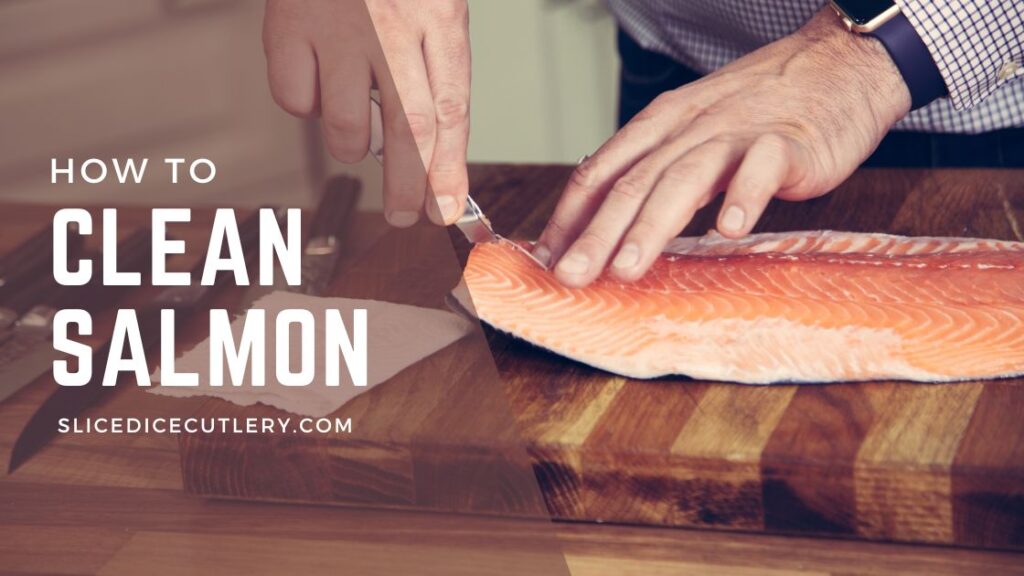
Step 1: Remove the Anal Fins and Scale the Fish
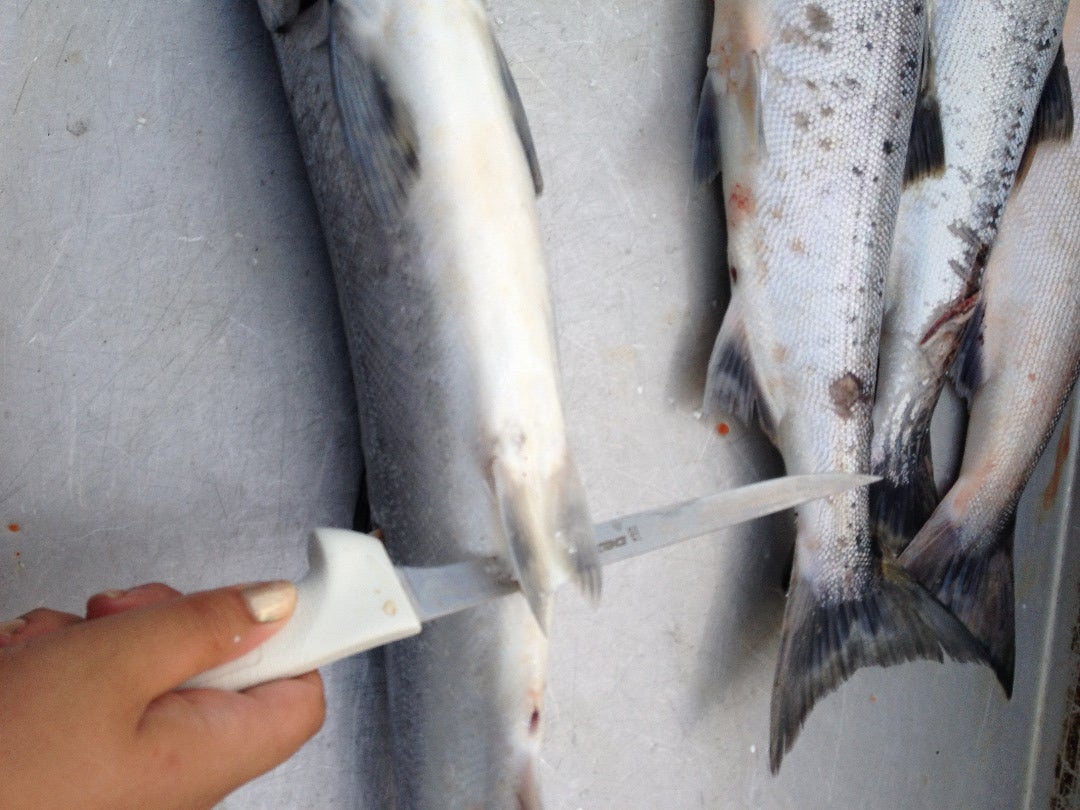
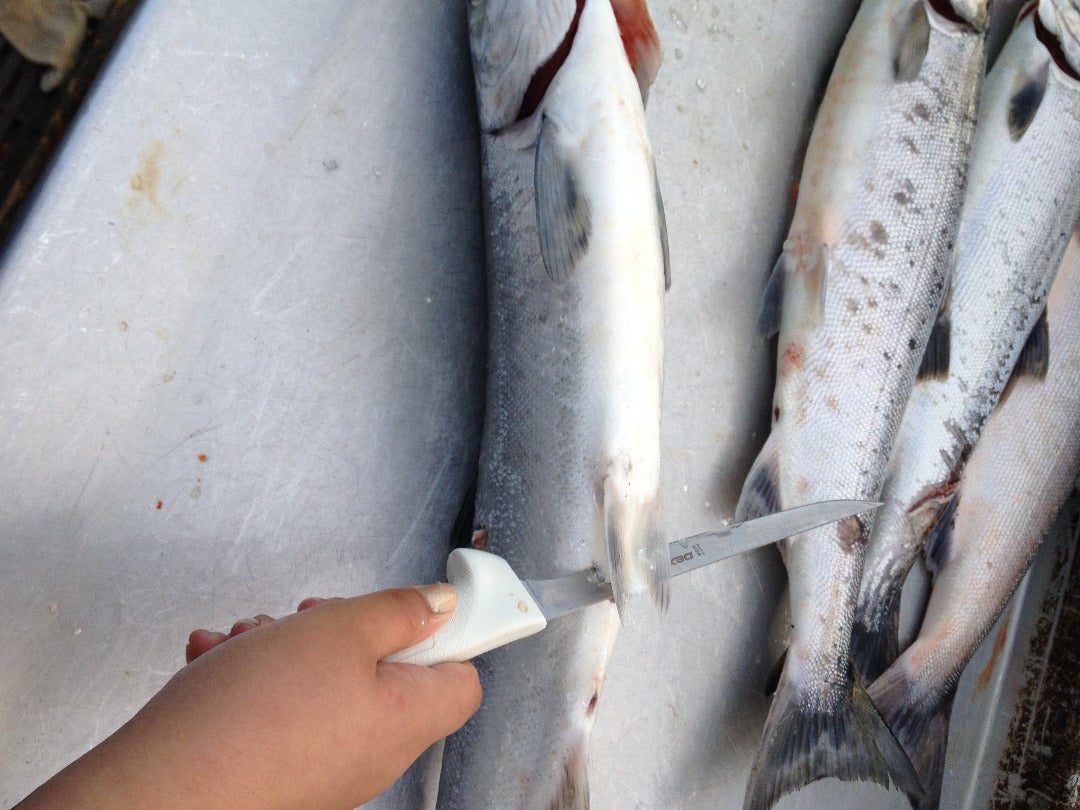
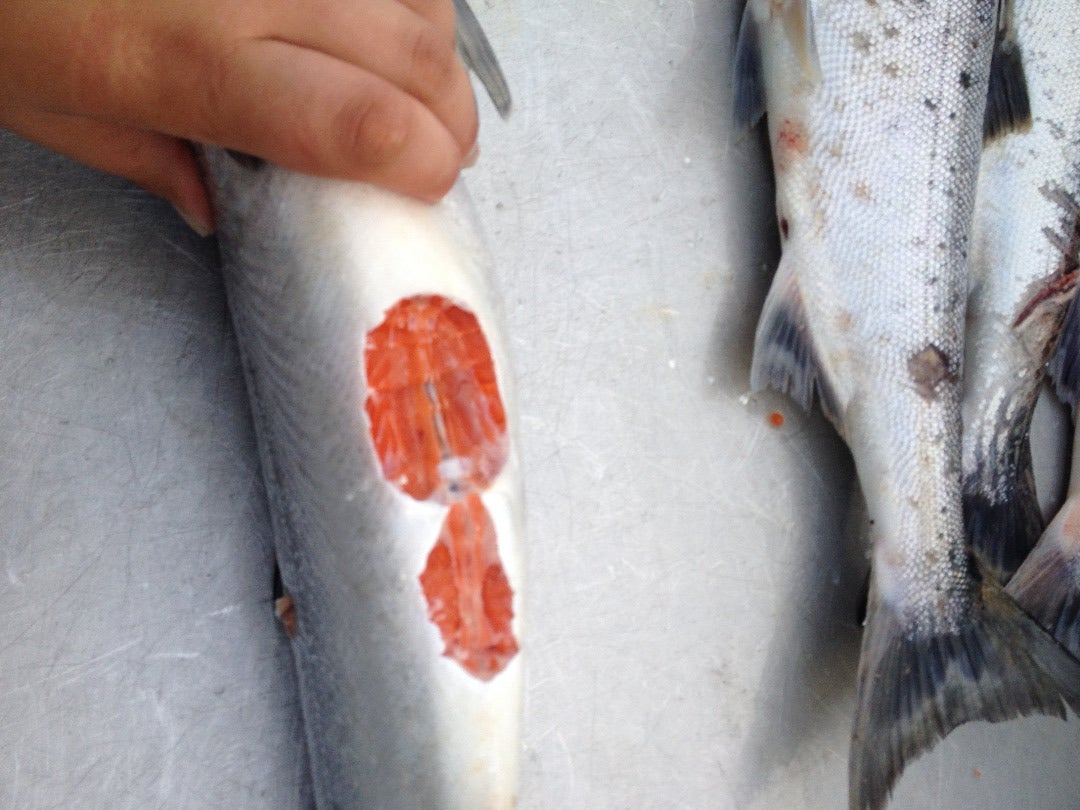
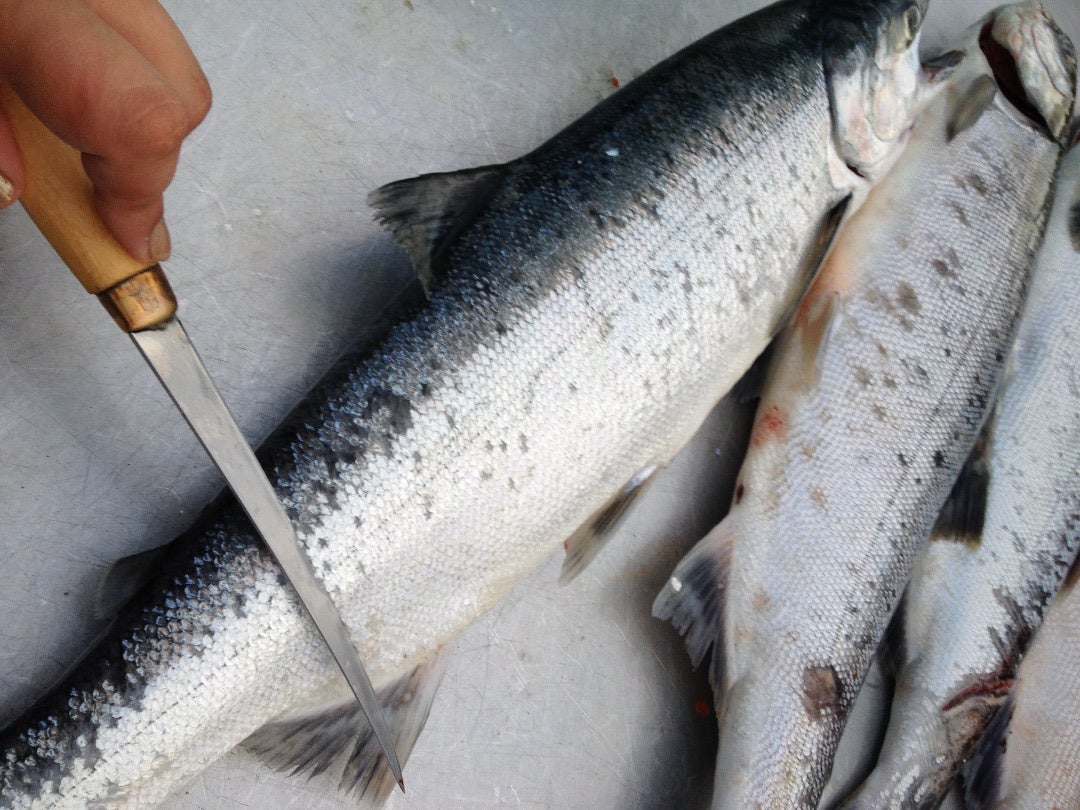
The anal fins are a pair of fins located near the rear of the fish. To remove these fins place your knife behind the anal fins, make a small cut down and run the knife parallel to the fins. Once these fins are removed, dispose of them properly.
Once the fins are removed, scale the fish. As you can see, we did not do this on this fish, and it made it a lot harder to scale.
To scale the fish, you need to place a dull fillet knife (or a sharp one if you do not have more than one) near the tail of the fish and run it down the skin toward the head. Do this repeatedly, and with a fast repeated motion, to completely scale the fish. Make sure that you scale both sides of the fish.
DISCLAIMER:
You do not have to scale the fish, but salmon scales come off easily. It makes it difficult to clean the fillets and cook them if the scales are still on them.
Step 4: Remove the Ribs
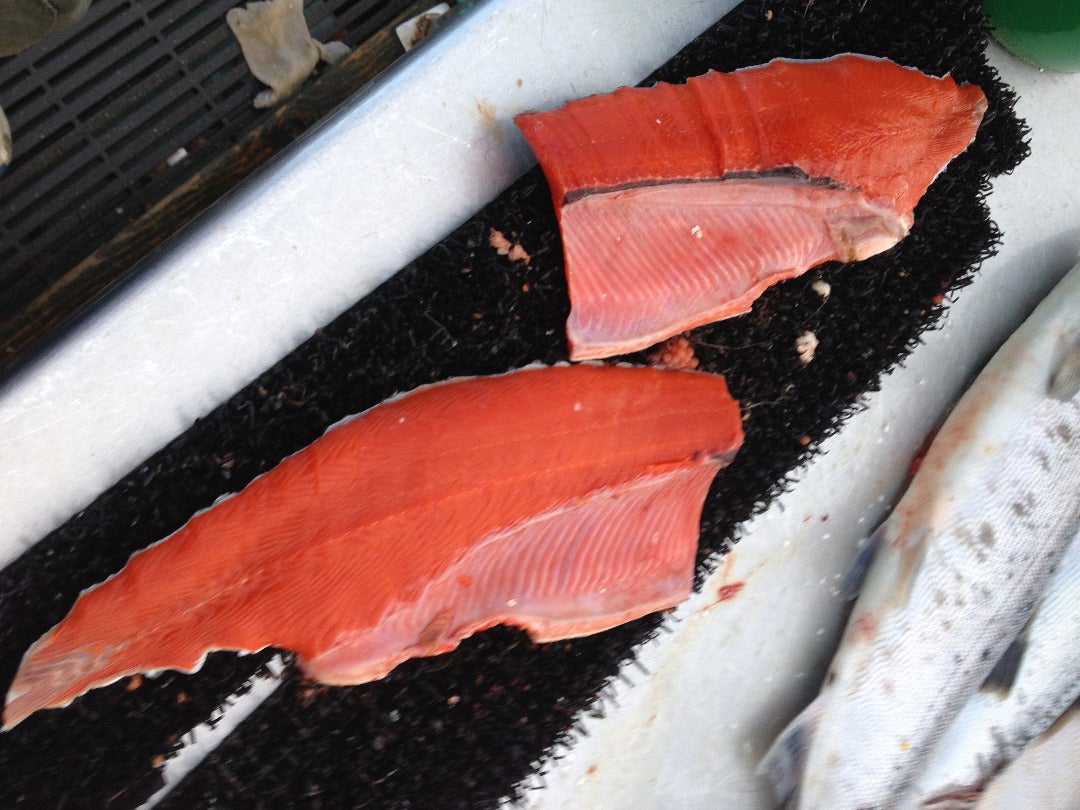
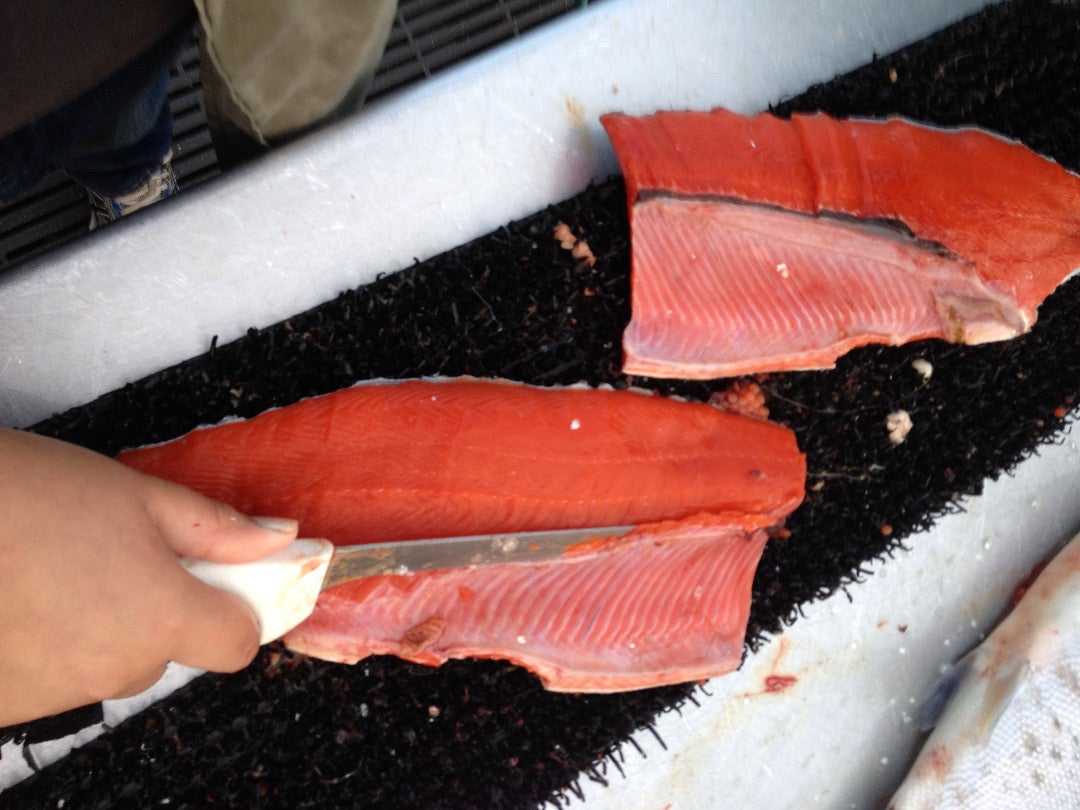
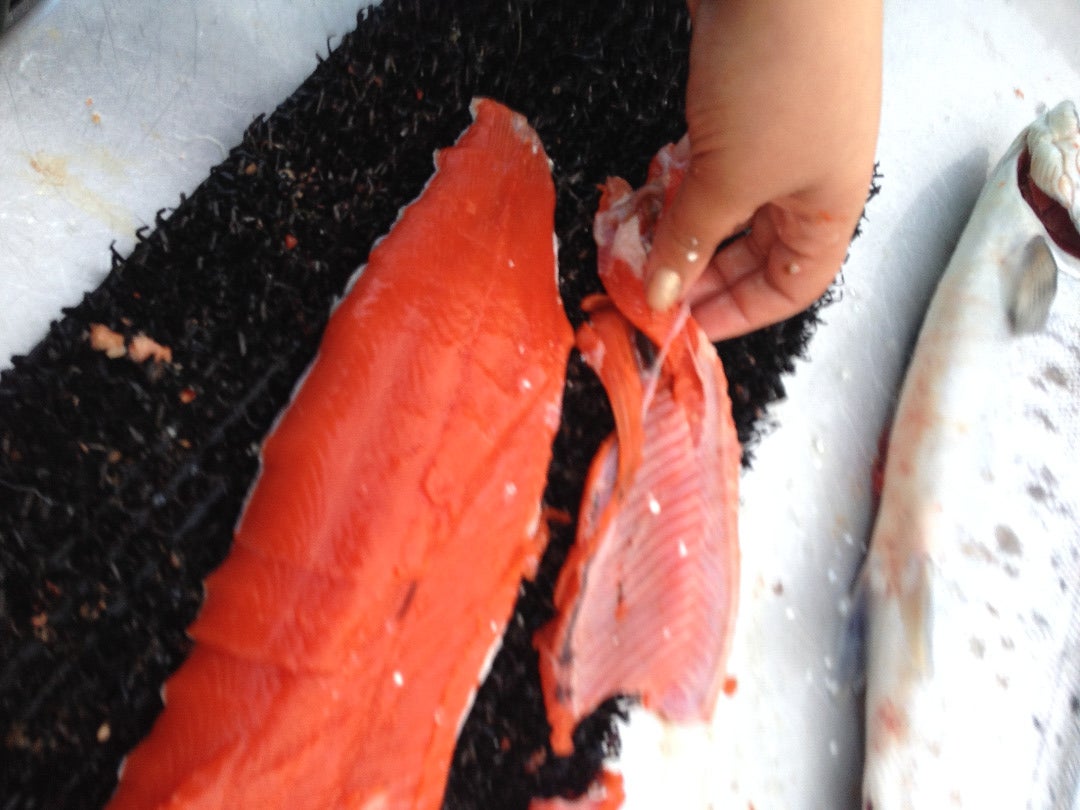
Once you have your fillets cut, you have to go back in and remove the ribs. To do this place your knife next to the ribs and run the knife down to the edge of the filet slowly. Make sure not to cut straight down, or you will lose a lot of the filet, instead run the knife parallel to the meat of the fish. This will remove the ribs with minimal loss of meat. Dispose of ribs properly.
After you remove the ribs, there will still be pinbones remaining in the fillets. You can remove these with tweezers, needle-nose pliers or hemostats before cooking, or you can pick them out of the fish as you eat it. Removal of the pinbones is easier after the fillets firm up in the refrigerator. Many people prefer to remove all of the bones before any cooking or preparation. Our family does.
HOW TO CLEAN A SALMON
FAQ
FAQ
What is the best way to clean salmon?
Secret tip: Don’t wash with water. Get a paper towel, soak it in vinegar, wipe down both sides of the fillet, pat dry with another paper towel. Your fish will be much sweeter and the process will reveal any hidden bones.
How do you prep salmon before cooking?
It’s not cooked, but it’s “cured” with salt and sugar. You cover the salmon with a dry salt and sugar brine, wrap it in plastic, poke holes in it, and put a heavy weight on it. As it sits overnight, it will toughen up to the correct consistency as it cures and loses moisture. You can then slice it very thinly.
Do you wash salmon with vinegar?
Several cultures believe in the practice of washing proteins because it’s associated with cleanliness and purity. For instance, many Caribbean households rinse their meat and fish with an acid like vinegar, lime or lemon to remove any excess debris and to tenderize the meat.
